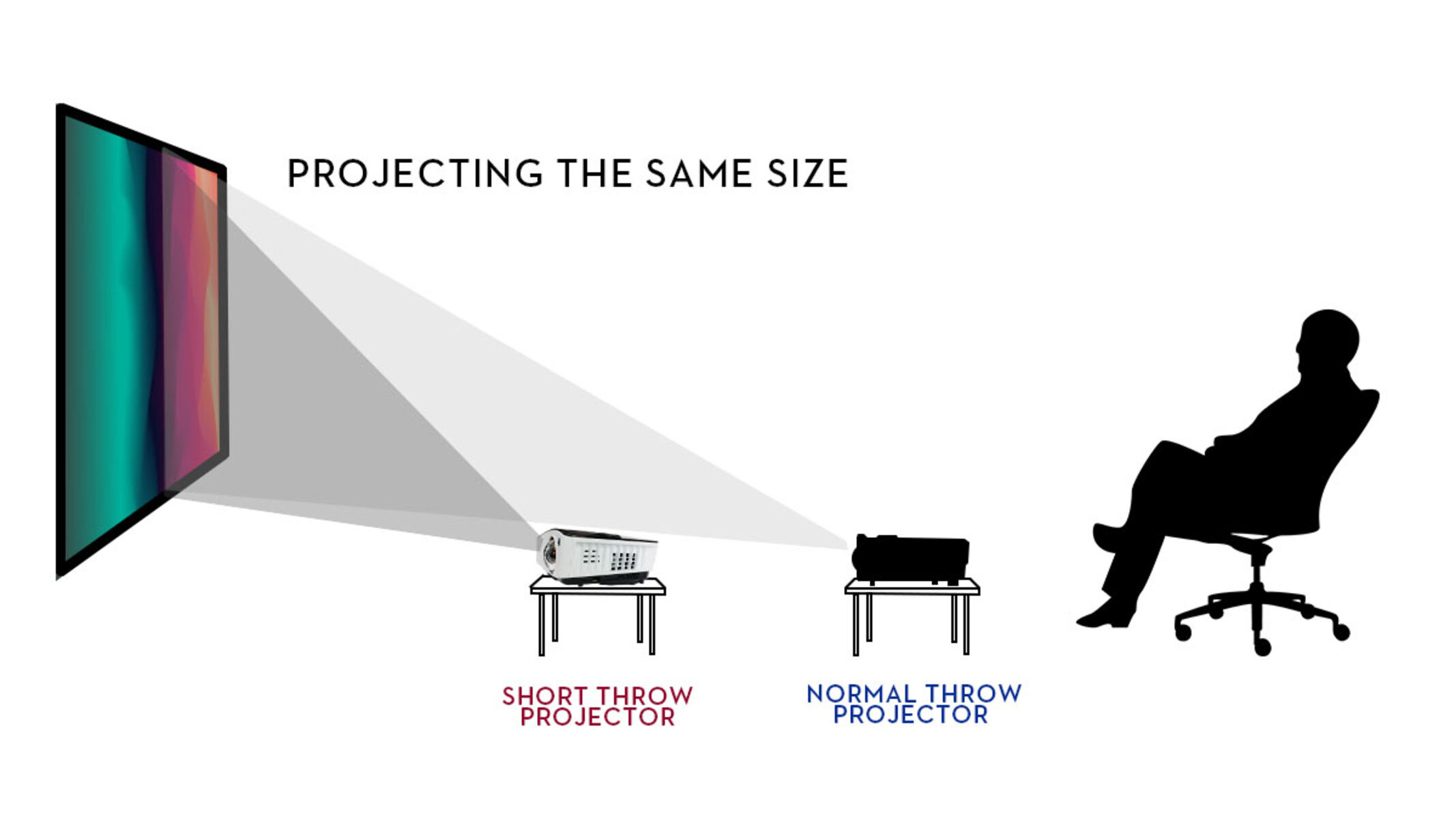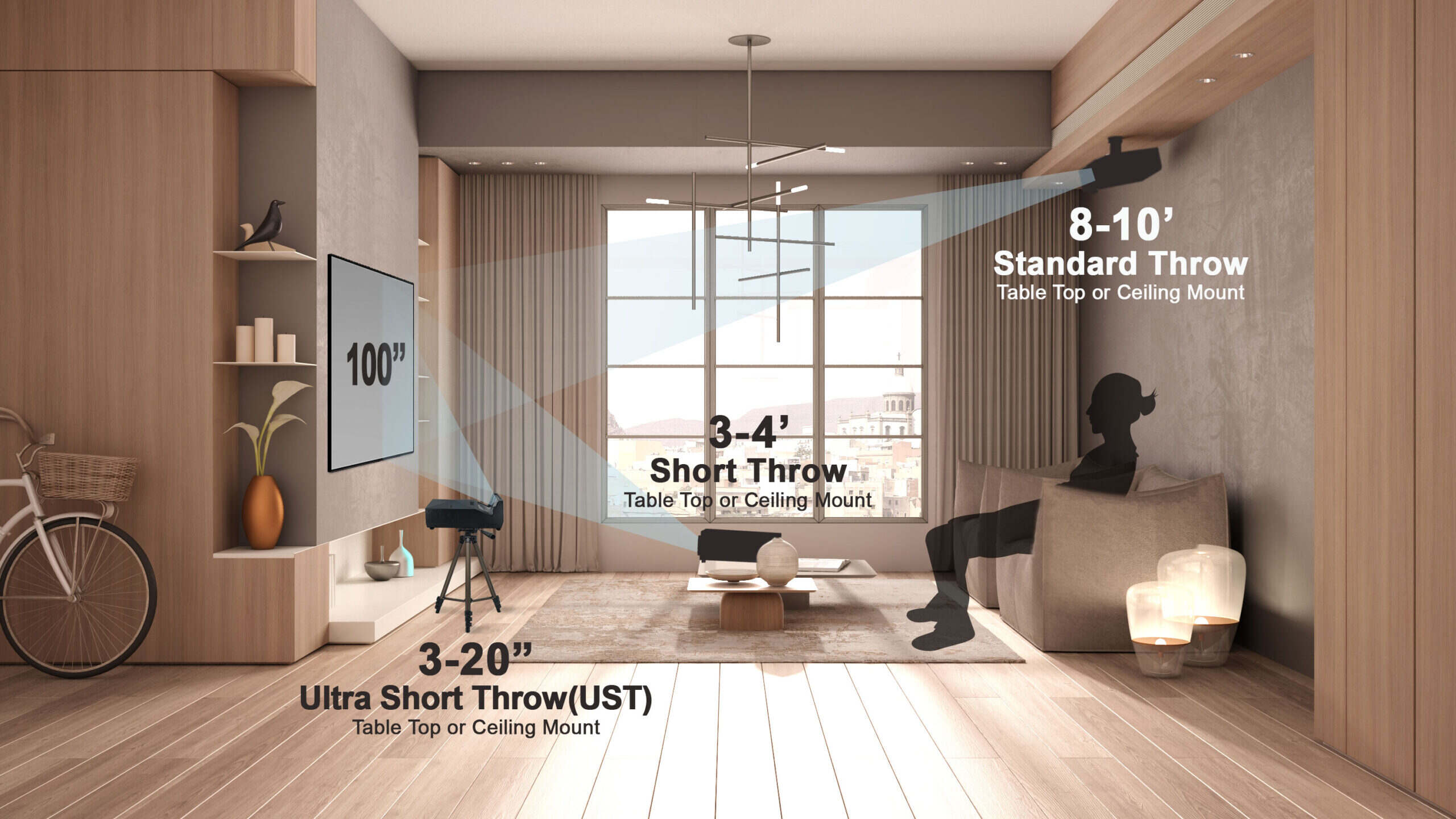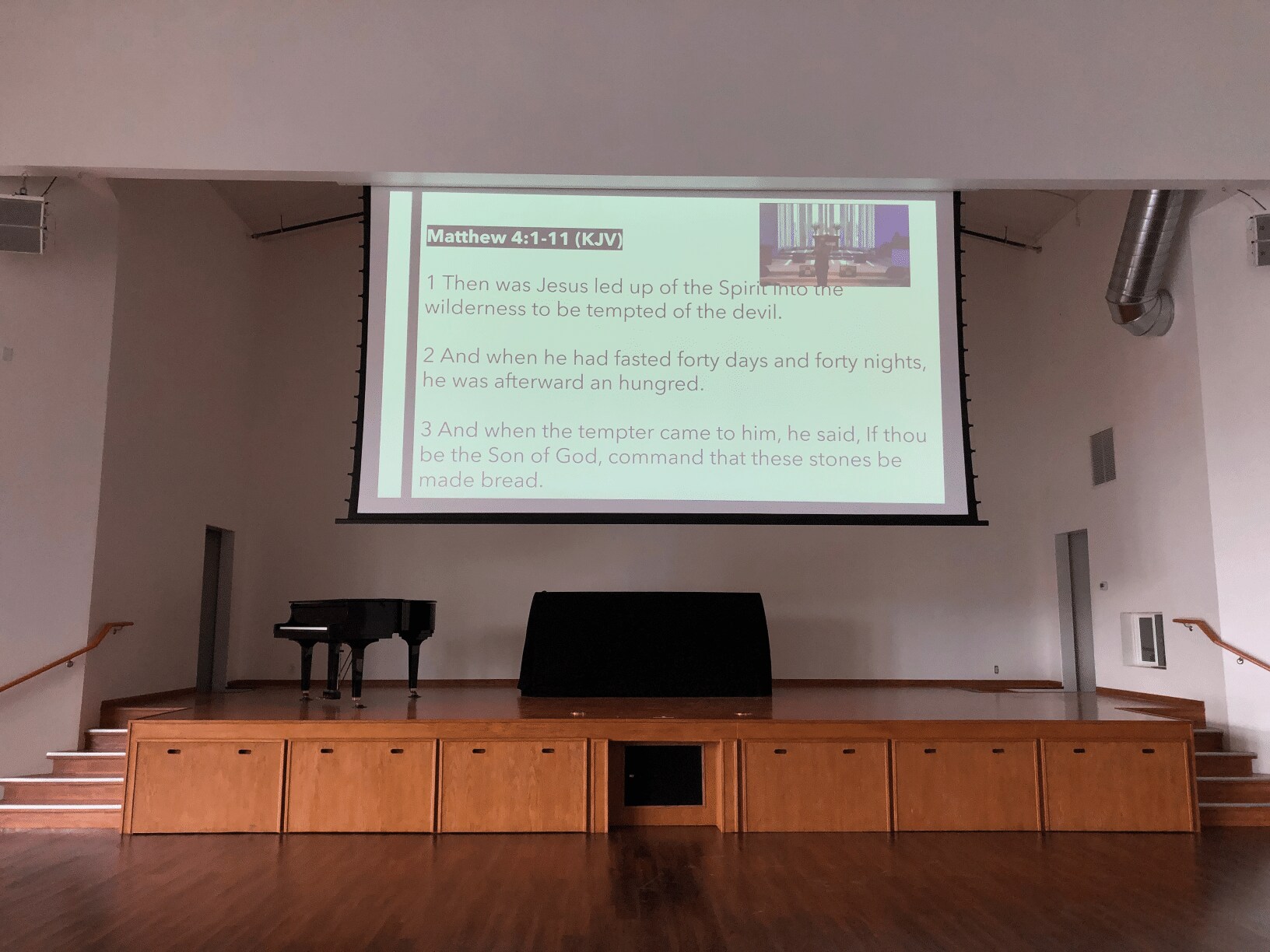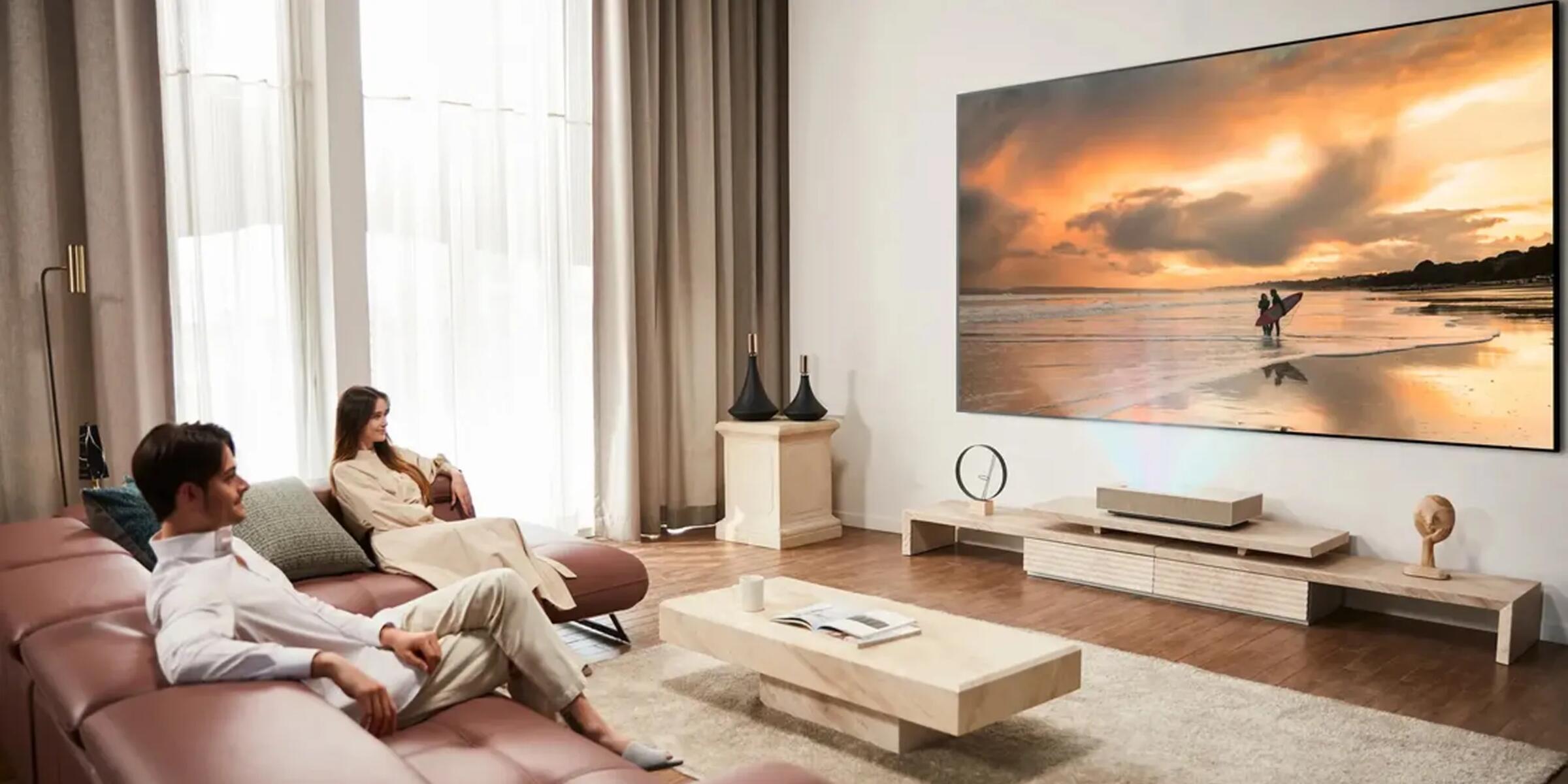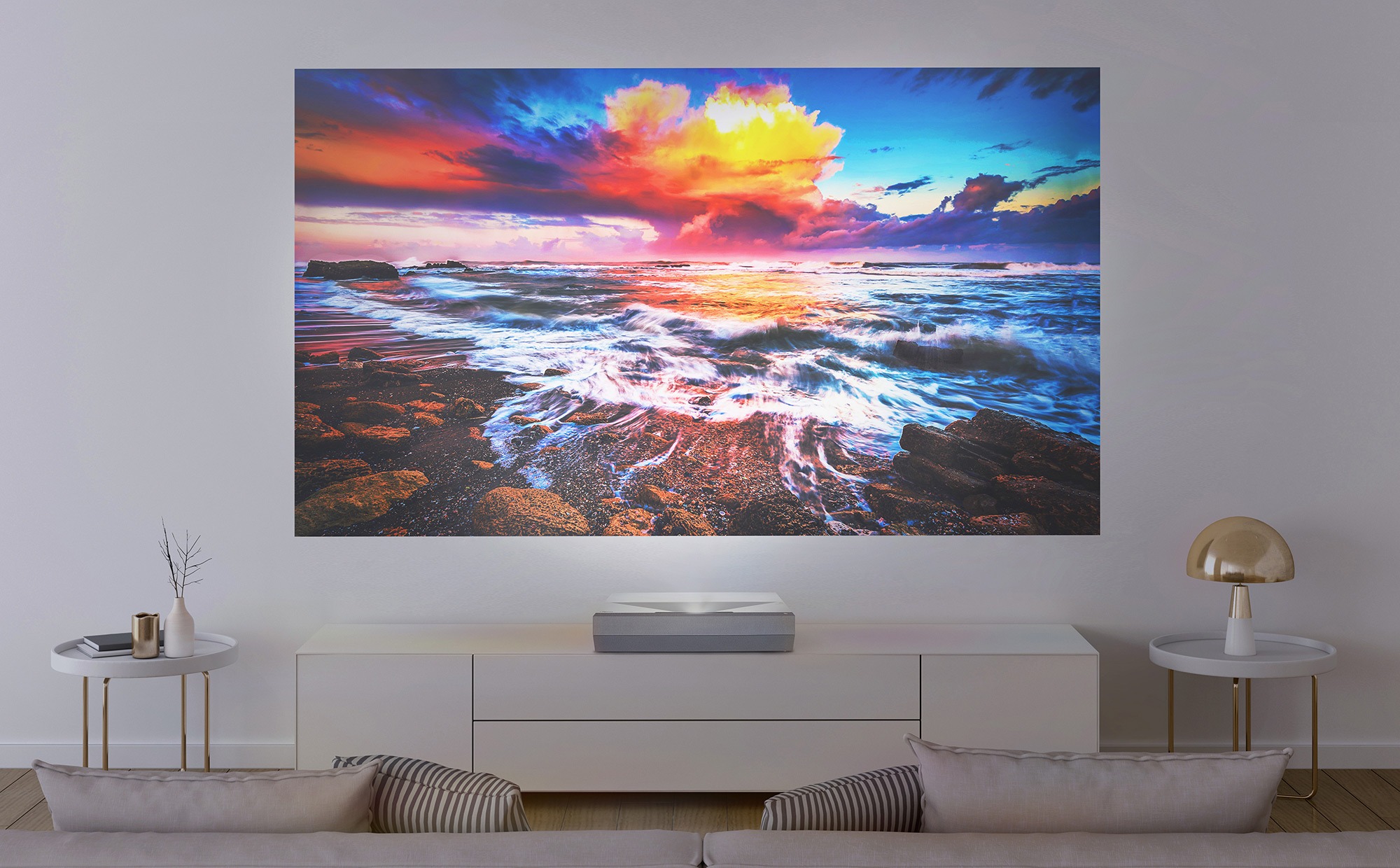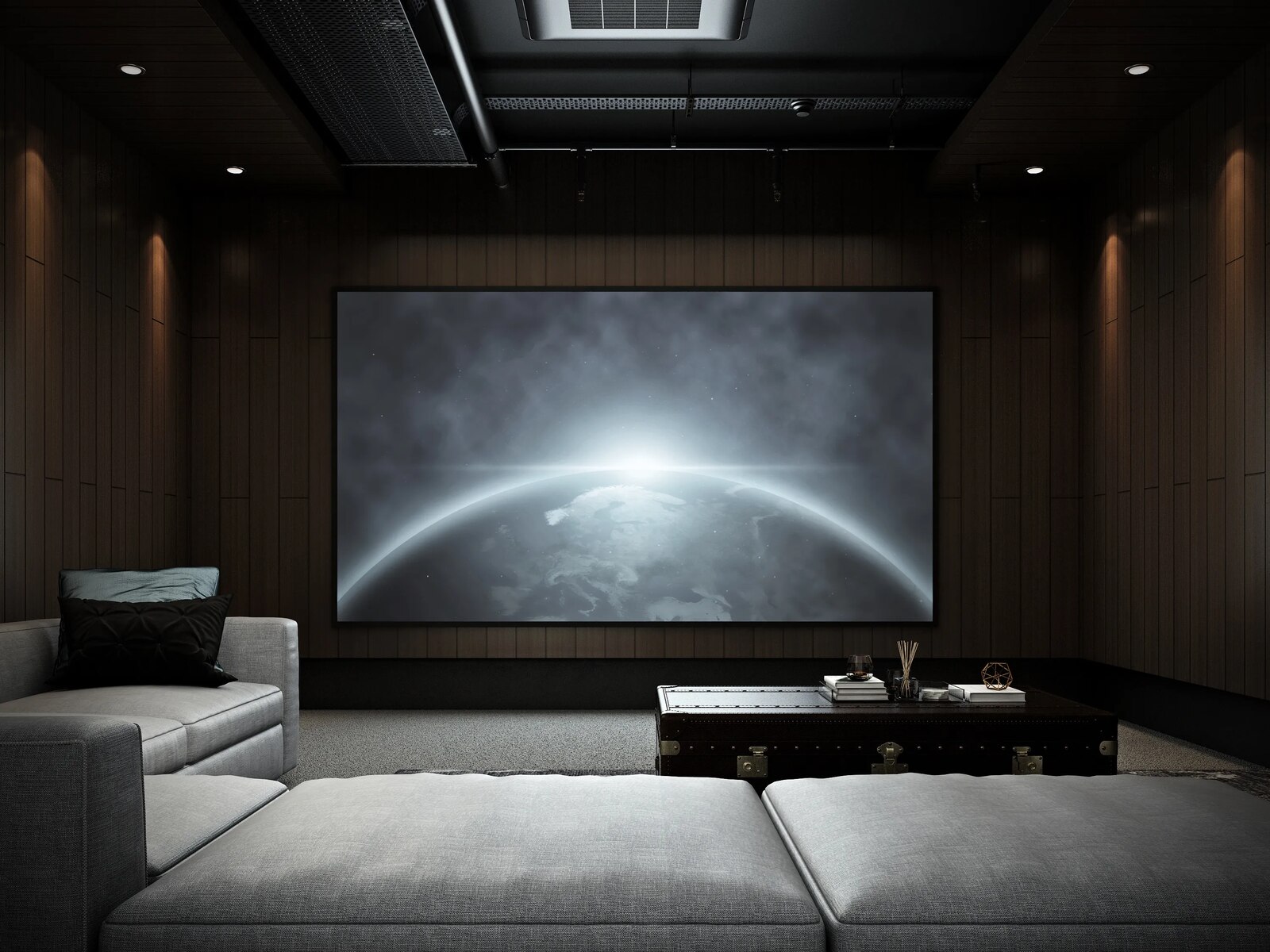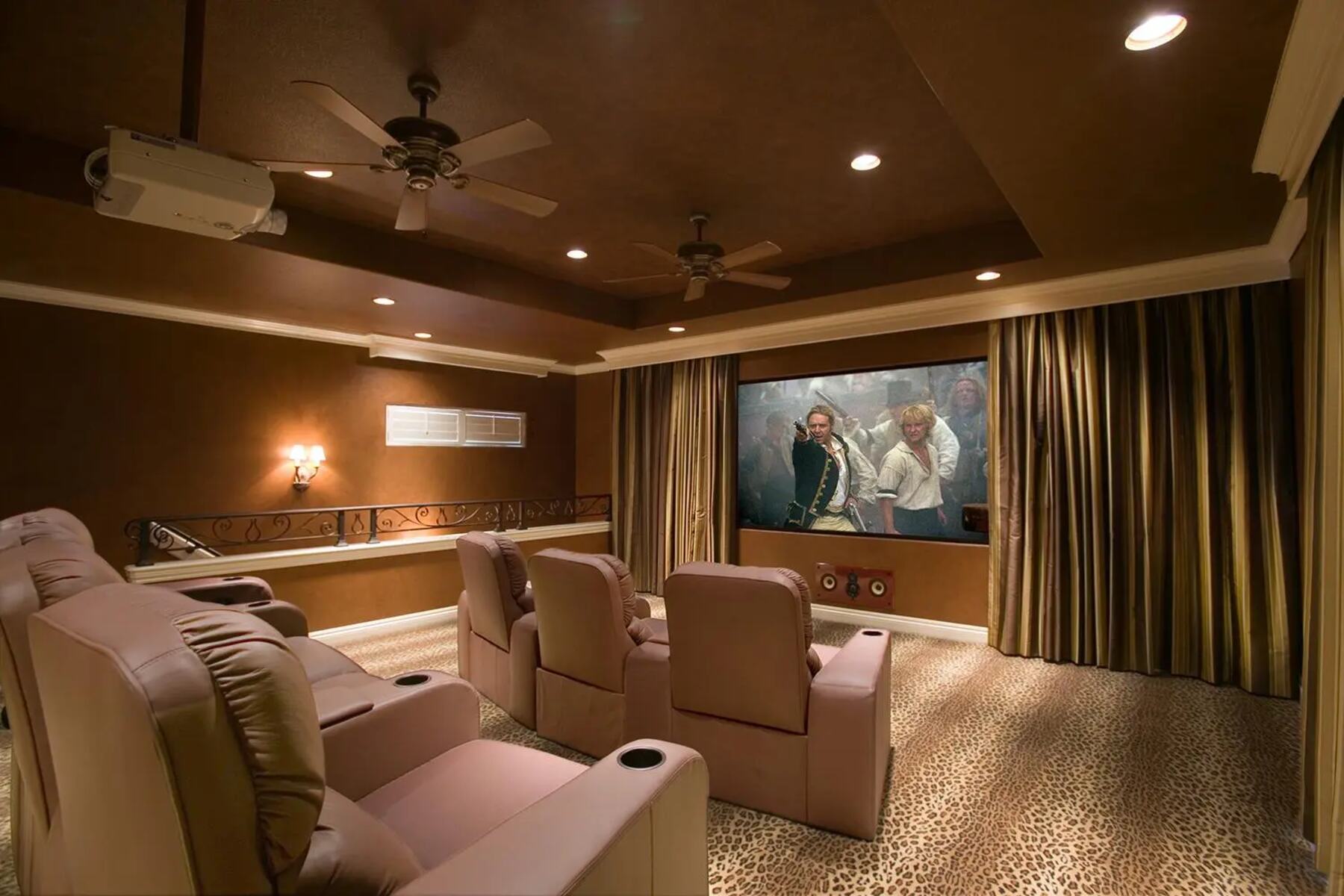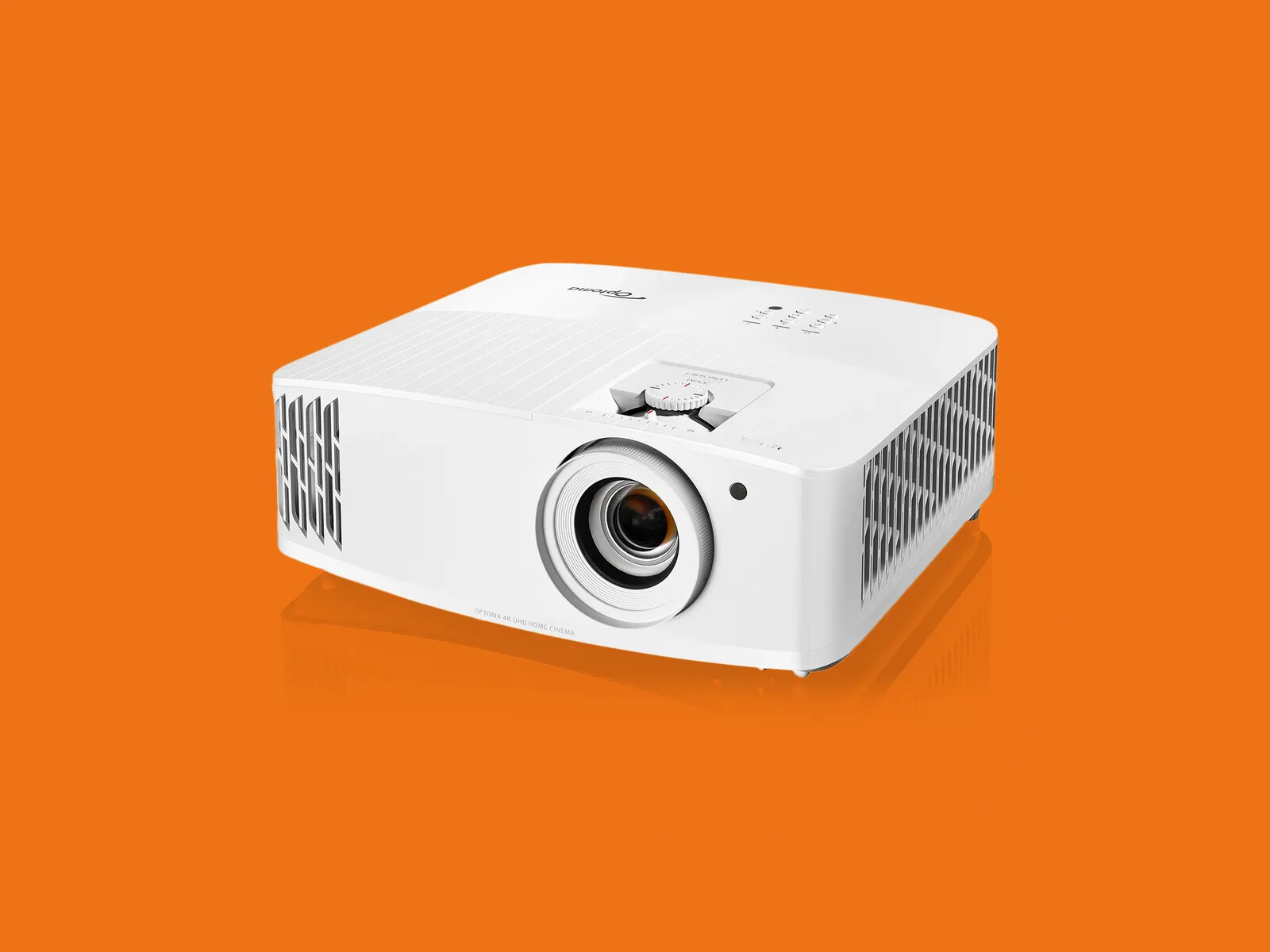Introduction
Projectors have become an integral part of our audio-visual experiences, whether for presentations in the boardroom or creating a home theater setup. However, choosing the right projector for your needs can be a daunting task, especially when it comes to understanding technical specifications such as throw ratio.
When talking about projectors, throw ratio refers to the distance between the projector and the screen, compared to the width of the projected image. It plays a crucial role in determining the projector’s placement and the size of the projected image.
Understanding throw ratio is essential for achieving the desired image size and clarity in any given space. It can help you decide whether a short throw or long throw projector is suitable for your needs and ensure that you select the right projector for your room size.
By delving deeper into the concept of throw ratio and its calculation, as well as exploring the differences between short throw and long throw projectors, you can make an informed decision when it comes to choosing the right projector throw ratio for your needs.
Furthermore, by understanding throw ratios for different projector models and considering the size of your room, you can ensure optimal image quality and a satisfying viewing experience.
In this article, we will explore the world of projector throw ratios, providing you with the knowledge needed to choose the perfect projector for your specific requirements. So let’s embark on this informative journey and discover the intricacies of projector throw ratios!
What is a projector throw ratio?
A projector throw ratio is a numerical value that indicates the distance between the projector and the screen, relative to the width of the projected image. It essentially defines the size of the image produced by the projector and helps determine the ideal placement of the projector in a given space.
Throw ratio is represented as a range, such as 1.5-2.0:1, and is calculated by dividing the distance from the projector to the screen by the width of the projected image. For example, a projector with a throw ratio of 1.5:1 means that for every 1.5 feet of distance between the projector and the screen, the width of the projected image will be 1 foot. The throw ratio is a crucial factor in determining the size of the projected image, as well as the aspect ratio.
A high throw ratio indicates that the projector needs more distance between itself and the screen to produce a larger image, while a low throw ratio means that the projector can be placed closer to the screen and still produce a large image. Understanding the throw ratio of a projector is essential for achieving the desired image size in any given space.
It’s worth noting that different projectors have different throw ratios, depending on their design and specifications. Some projectors are classified as short throw, which have a low throw ratio and can be placed closer to the screen, while others are long throw, requiring more distance between the projector and the screen to achieve a larger image. The throw ratio plays a central role in determining which type of projector is suitable for your needs.
By understanding the concept of throw ratio and how it affects the image size and placement of a projector, you can make an informed decision when choosing the right projector for your space. In the next section, we will explore how throw ratio is calculated and the differences between short throw and long throw projectors.
How is throw ratio calculated?
Calculating the throw ratio of a projector involves a simple mathematical equation that determines the relationship between the distance from the projector to the screen and the width of the projected image. To calculate the throw ratio, you need to divide the projection distance by the width of the image.
Here is the formula:
Throw Ratio = Projection Distance / Image Width
For example, if the projector is placed 10 feet away from the screen and the projected image has a width of 5 feet, the throw ratio would be calculated as:
Throw Ratio = 10 feet / 5 feet = 2:1
So, in this case, the throw ratio would be 2:1, indicating that for every 2 feet of distance from the projector to the screen, the width of the projected image will be 1 foot. Remember that throw ratios are typically expressed as a range, such as 1.5-2.0:1, to account for slight variations in projector placement and zoom settings.
It’s important to note that the throw ratio directly impacts the size of the projected image. A smaller throw ratio means the projector can be positioned closer to the screen to achieve a larger image, while a larger throw ratio requires the projector to be placed farther away from the screen to achieve the desired image size.
Understanding how throw ratio is calculated empowers you to select the right projector for your specific needs. In the next section, we will explore the differences between short throw and long throw projectors and how throw ratios affect their performance.
Short throw vs. long throw projectors
When it comes to projectors, there are two main categories based on throw ratio: short throw and long throw projectors. These categories refer to the placement distance required for the projector to produce a specific image size.
A short throw projector typically has a throw ratio of less than 1.0:1, which means it can be positioned relatively close to the screen to project a large image. These projectors are ideal for small spaces, such as classrooms or small conference rooms, where there may not be much distance between the projector and the screen.
On the other hand, long throw projectors have a higher throw ratio, usually above 1.5:1. These projectors need to be placed farther away from the screen to achieve a large image size. They are commonly used in larger venues, such as auditoriums or theaters, where there is sufficient distance between the projector and the screen.
Short throw projectors offer several advantages. Firstly, they eliminate the risk of shadows cast by presenters or objects passing in front of the projector. Since these projectors are positioned close to the screen, there is little chance of obstructions interfering with the projection. Secondly, short throw projectors reduce the amount of light lost due to long distances, resulting in brighter and clearer images. Lastly, short throw projectors are more space-efficient, as they require less room for installation and setup.
On the other hand, long throw projectors are better suited for larger venues where there is ample space between the projector and the screen. These projectors can produce larger image sizes without distorting or losing image quality. Additionally, long throw projectors are often preferred for outdoor or large-scale events where the audience is seated at a significant distance from the screen.
When deciding between a short throw and long throw projector, consider factors such as the size of the room, the desired image size, and the available mounting options. If you have limited space or need to avoid obstacles, a short throw projector may be the better choice. However, if you have a large venue or require a massive projection, a long throw projector will be more suitable.
Now that we understand the differences between short throw and long throw projectors, let’s dive deeper into recommended throw ratios for different room sizes in the next section.
Recommended throw ratio for different room sizes
Choosing the correct throw ratio is crucial for achieving optimal image quality and ensuring that the projected image fits perfectly within the available space. The appropriate throw ratio will vary depending on the size of the room and the desired screen size. Here are some general recommendations for different room sizes:
- Small rooms: For small rooms, such as home offices or small classrooms, a short throw projector with a throw ratio of 0.6-1.0:1 is recommended. This allows for a large image size while minimizing the required projection distance.
- Medium-sized rooms: For medium-sized rooms, like conference rooms or training rooms, a throw ratio of 1.0-1.5:1 is typically suitable. This provides a balance between projection distance and image size, accommodating larger screen sizes without requiring excessive space.
- Large rooms: In larger rooms, such as auditoriums, lecture halls, or theaters, a long throw projector with a throw ratio of 1.5-2.0:1 or higher is recommended. These projectors can handle larger screen sizes and have the necessary throw distance to project the image across the room.
Keep in mind that these recommendations may vary depending on the specific projector model and its zoom capabilities. Some projectors offer adjustable zoom lenses that allow for flexibility in throw ratio, enabling you to adjust the image size based on the available space.
Additionally, it’s important to consider the aspect ratio of the projected image. Most projectors support a standard aspect ratio of 16:9, which is ideal for widescreen content. However, some projectors also offer options for 4:3 or other aspect ratios to accommodate different content formats.
Before selecting a projector, measure the dimensions of your room and determine the desired screen size. This will help you determine the appropriate throw ratio and ensure that the projector you choose can meet your specific requirements.
Now that we have explored the recommended throw ratios for different room sizes, let’s delve into understanding throw ratios for different projector models in the next section.
Understanding throw ratios for different projector models
When it comes to projector models, it’s important to understand that different manufacturers and models may have their own unique throw ratio specifications. Therefore, it’s essential to review the specifications provided by the projector manufacturer to determine the throw ratio of a specific model.
Manufacturers typically provide a range of throw ratios for each projector model, indicating the minimum and maximum throw ratio values. For example, a projector may have a throw ratio range of 1.5-2.0:1, offering flexibility in projector placement and image size adjustments.
Some projector models have interchangeable lenses that allow for even more flexibility in throw ratio options. These lenses can be swapped out to achieve different throw ratios, accommodating various room sizes and screen configurations.
When selecting a projector model, consider the throw ratio range offered. If you have a specific room size and desired screen size in mind, ensure that the projector’s throw ratio falls within the appropriate range to achieve your desired image size and placement.
Another factor to consider is the zoom capability of the projector. Some projectors offer optical zoom, allowing you to adjust the throw ratio by zooming in or out without sacrificing image quality. This feature can be beneficial if you need to make minor adjustments to the throw ratio to fit the screen within the available space.
It’s worth noting that projectors with a wider throw ratio range tend to offer more flexibility in terms of placement and image size. However, it’s important to strike a balance between the desired image size and the limitations of the room size. Avoid selecting a projector with an unnecessarily wide throw ratio if it exceeds your needs, as it may result in a compromised image quality or require excessive projection distance.
By understanding the throw ratios for different projector models, you can narrow down your options and choose a projector that best fits your specific requirements. In the next section, we will discuss how to choose the right projector throw ratio for your needs.
How to choose the right projector throw ratio for your needs
Choosing the right projector throw ratio requires careful consideration of several factors, including the size of the room, desired screen size, and projector placement options. By following these steps, you can ensure that you select the perfect projector throw ratio for your specific needs:
- Measure the room: Start by measuring the dimensions of the room where the projector will be used. This includes the length, width, and ceiling height. Having accurate measurements will help you determine the appropriate throw distance and ensure that the projected image fits within the available space.
- Determine screen size: Decide on the desired screen size, taking into account the seating arrangement and viewing distance. Consider the aspect ratio as well, whether you prefer a widescreen format (16:9) or a standard format (4:3).
- Calculate throw distance: Based on the room measurements and desired screen size, calculate the ideal throw distance using the projector’s throw ratio. Use the throw ratio formula mentioned earlier: Throw Distance = Throw Ratio × Image Width.
- Account for installation limitations: Consider any limitations or obstacles that might affect projector placement, such as furniture, columns, or windows. Ensure that the projector’s throw distance falls within the available installation options.
- Research projector models: Research different projector models and their throw ratio specifications. Look for models that fall within your calculated throw distance to ensure compatibility.
- Consider room size: Take into account the size of the room when selecting a throw ratio. For smaller rooms, a short throw projector may be more suitable, while larger rooms may require a long throw projector.
- Review zoom capabilities: Evaluate the zoom capabilities of the projector models you are considering. Optical zoom allows for minor adjustments to the throw ratio without sacrificing image quality.
- Test and adjust: If possible, test the projector in the actual room setting before making a final decision. This will help you determine if the throw ratio and projection distance align with your desired screen size and placement.
By following these steps, you can choose the right projector throw ratio that is tailored to your specific needs and delivers an optimal viewing experience.
Now armed with the knowledge of how to choose the ideal projector throw ratio, you can confidently select a projector that fits your requirements. In the next section, we will summarize the key points covered in this article.
Conclusion
Understanding projector throw ratios is essential for selecting the right projector that fits your specific needs. By considering factors such as room size, desired screen size, and projector placement options, you can determine the ideal throw ratio for your setup.
A projector’s throw ratio directly affects the distance between the projector and the screen, as well as the size of the projected image. Short throw projectors are ideal for smaller spaces, while long throw projectors are better suited for larger venues.
Calculating the throw ratio involves dividing the projection distance by the width of the projected image. It’s important to review the throw ratio specifications provided by projector manufacturers and consider any adjustable zoom capabilities that can fine-tune the throw ratio.
Recommended throw ratios vary depending on the room size. Small rooms benefit from short throw projectors, while larger rooms require long throw projectors. It’s crucial to measure the room dimensions, determine the desired screen size, and ensure that the throw ratio falls within the appropriate range.
By following a step-by-step approach that includes measuring the room, calculating throw distance, researching projector models, and testing the setup, you can confidently choose the right projector throw ratio for your needs.
The world of projectors may seem complex initially, but with a solid understanding of throw ratios, you can make an informed decision. Now that you are armed with the knowledge to navigate the world of projector throw ratios, enjoy the benefits of a well-calibrated setup and immerse yourself in stunning visual experiences!







